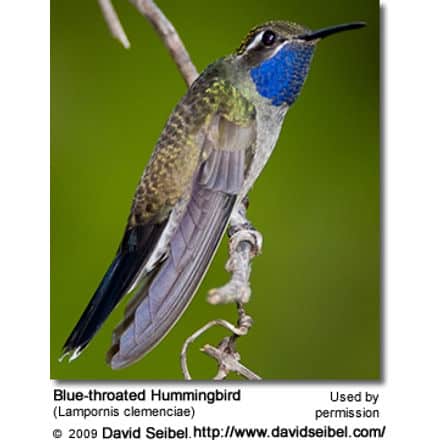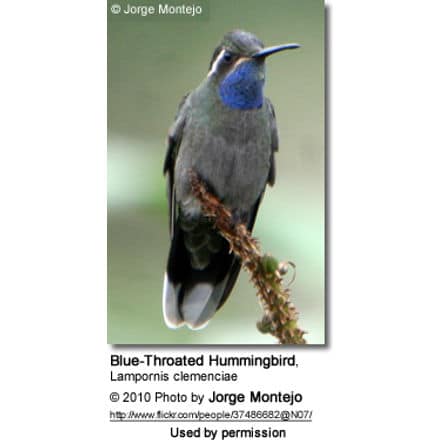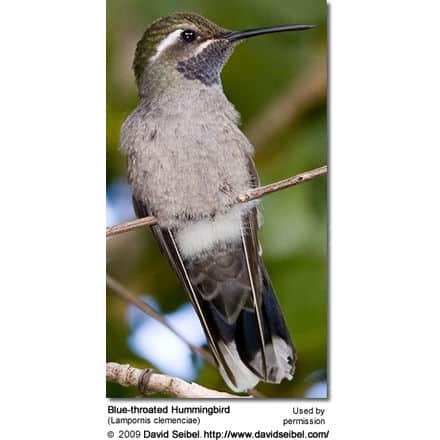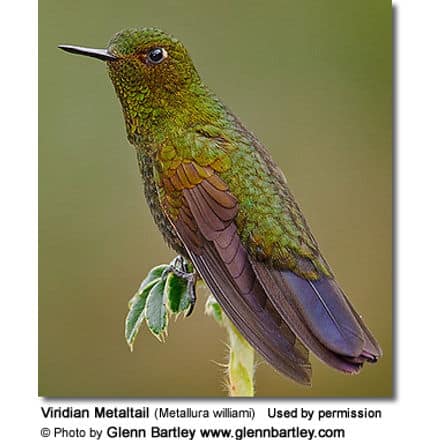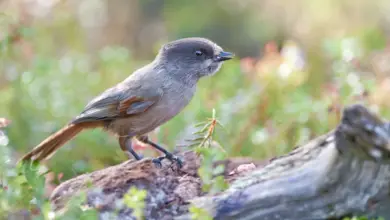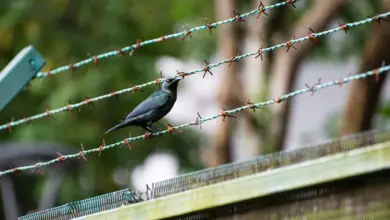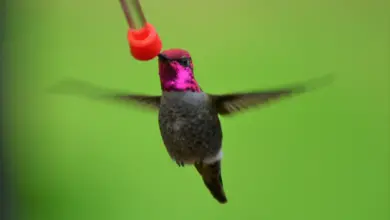Blue-throated Hummingbirds
Hummingbird Information
The Blue-throated Hummingbirds (Lampornis clemenciae) – also known as Blue-throated Mountaingem or Blue-throated Sylph – is a large hummingbird that is named for the iridescent blue throat patch (gorget) of the adult male.
Alternate (Global) Names
Spanish: Colibrí Garganta Azul, Colibrí Gorgiazul, Colibri-serrano Gorjiazul, Gema de Garganta Azul … French: Colibri à gorge bleue, Colibri de Clémence … Italian: Colibrì golablu … German: Blaukehlnymphe, Blaukehl-Nymphe … Latin: Coeligena clemenciae, Cyanolaemus clemenciae, Lampornis clemenciae … Czech: kolib?ík Clémenciin, Kolibrík Klementin … Danish: Blåstrubet Bjergjuvel … Finnish: Sinikurkkukolibri … Japanese: rurinodoshiromejirihachidori … Dutch: Blauwkeeljuweelkolibrie, Blauwkeel-juweelkolibrie … Norwegian: Blåstrupejuvel … Polish: malachicik ciemny … Russian: ?????????? ?????????? ??????? … Slovak: medovec modrohrdlý … Swedish: Blåstrupig kolibri
Distribution / Range
The Blue-throated Hummingbirds winter in the mountain woodlands of Mexico, following the highlands and central plateau as far south as Oaxaca.
For the breeding season, they will migrate to the mountain canyons of southwestern United States, including southern Arizona, southern New Mexico and western Texas.
Vagrants have been recorded in California, Colorado, northeastern New Mexico, Eastern Texas, Louisiana, Alabama, South Carolina, Georgia and Florida.
Within their range, they breed at higher elevations of the mountains moving down during the winter months. The average elevation ranges between 1,800 – 3,300 m (5,900 – 10,800 ft). (Howell, 2002; Johnsgard, 1983)
The Blue-throated Hummingbirds are usually found close to water. They prefer pine-oak forests, but also occur in open areas.
Subspecies, Ranges and ID
Lampornis clemenciae clemenciae (Lesson, 1829)- Nominate Race
– Found in southern USA (southwestern Texas) and northeastern, central and southern Mexico (Sierra Madre Oriental and central plateau south to Oaxaca).[Lampornis clemenciae phasmorus (mostly included with the nominate form above)]
– Found in Texas
– Slightly greener than the Lampornis clemenciae bessophilus subspecies, with a slightly shorter bill (Howell, 2002)Lampornis clemenciae bessophilus (Oberholser, 1918) – SW USA
– Found in southwestern United States (southeastern Arizona, southern New Mexico) to northwestern Mexico (eastern Sonora and western Chihuahua).
– Slightly duller above and paler than the nominate form
Description:
The Blue-throated Hummingbird is a fairly large hummingbird, measuring 11.5 to 13.5 cm (4.5 to 5.25 inches) in length and weighing between 6 to 10 grams. Their wingspan is typically 79 mm (3.1 inches) for males and 68.5 mm (2.3 inches) for females (Johnsgard, 1983; Howell, 2002).
Common Physical Traits: The upper plumage is dull green, fading to a medium grey on the underside. It has white stripes behind the eyes and a narrower stripe extending backward from the corner of its relatively short bill, next to a blackish cheek patch. The tail feathers are iridescent bluish-black with broad white tail with white tips on the outer most tail feathers.
The male has an iridescent blue throat patch (gorget), which may appear black or grey color in poor light.
The female‘s throat is grey. Otherwise males and females look quite similar.
Juvenile birds look like females, except for a buffy edging on most feathers, especially on crown and rump (lower back).
Similar species: The female Blue-throated Hummingbird resembles the Magnificent Hummingbird, but has much larger white margins on her tail feathers. The Blue-throated Hummingbird is most easily differentiated from other species by their two white facial stripes.
Flight: Even though Blue-throated Hummingbirds are rapid fliers; they have the slowest wing beats of any North American hummingbird species. There are visual and audible differences between the Blue-throated Hummingbird and the considerably faster wing beats made by the Magnificent Hummingbird.
Lifespan: Little is known about the average lifespan; however, the longest-living male has been recorded living for 12 years (Johnsgard, 1983).
Nesting / Breeding
The male’s only involvement in the re productive process is the actual mating with the female. He will separate from the female immediately after copulation and move to higher elevations. He does not participate in choosing the nest location, building the nest or raising the chicks.
The female Blue-throated Hummingbird is responsible for building the large cup-shaped nest out of green moss fastened to a vertical plant stalk. She lines the nest with soft plant fibers, animal hair and feather down, and strengthens the structure with spider webbing and other sticky material, giving it an elastic quality to allow it to stretch to double its size as the chicks grow and need more room.
Unlike other North American hummingbirds that typically place their nests in bushes or on horizontal branches, the Blue-throated Hummingbird female usually places the nest in a covered area, such as a rock canyon wall, rock overhangs or under a human structures, for example under roofs, sheltered cabins or woven into a wall. They tend to nest close to, or over running, water. The Blue-throated Hummingbird usually returns to the same nesting site year after year; building her new nest on top of the previous nest(s), which eventually take on the shape of a “nest tower.” For example, one female built her new nests on top of her old nests for 10 recorded years. On that tenth year, this nest was 127 mm (5 inches) high and 63 mm (2.5 inches) wide. It is estimated that she used around 24,000 kilometers (~14,913 miles) of spider and insect thread during the construction of these nests.
The average clutch consists of two white eggs, which she incubates alone for about 17 to 19 days. The young are born blind, immobile and without any down.
The female alone protects and feeds the chicks with regurgitated food (mostly partially-digested insects since nectar is an insufficient source of protein for the growing chicks). The female pushes the food down the chicks’ throats with her long bill directly into their stomachs.
As is the case with other hummingbird species, the chicks are brooded only the first week or two, and left alone even on cooler nights after about 12 days – probably due to the small nest size. The chicks leave the nest when they are about 24 – 26 days old. Under ideal conditions, she may raise up to three broods per year.
Diet / Feeding
The Blue-throated hummingbirds primarily feed on nectar taken from a variety of brightly colored, scented small flowers of trees, herbs, shrubs and epiphytes; such as various Salvia species, Penstemon, Lobelia laxiflora and Nicotiana. They also regularly visit honeysuckle, gilia, and agave plants – to catch insects that are attracted to them. (Johnsgard, 1983)
In general, they favor flowers with the highest sugar content (often red-colored and tubular-shaped) and seek out, and aggressively protect, those areas containing flowers with high energy nectar. They use their long, extendible, straw-like tongues to retrieve the nectar while hovering with their tails cocked upward as they are licking at the nectar up to 13 times per second. Sometimes they may be seen hanging on the flower while feeding.
Many native and cultivated plants on whose flowers these birds feed heavily rely on them for pollination. The mostly tubular-shaped flowers actually exclude most bees and butterflies from feeding on them and, subsequently, from pollinating the plants.
They may also visit local hummingbird feeders for some sugar water, or drink out of bird baths or water fountains where they will either hover and sip water as it runs over the edge; or they will perch on the edge and drink – like all the other birds; however, they only remain still for a short moment.
The Blue-throated Hummingbird eats more insects than other hummingbird species, allowing them to do well in areas where the more nectar dependent species could not survive. For example, they will feed on any insects that are attached to plants, as well as small spiders, small beetles, flies, wasps and plant lice). All of which are important sources of protein particularly needed during the breeding season to ensure the proper development of their young. Insects are often caught in flight (hawking); snatched off leaves or branches, or are taken from spider webs. A nesting female can capture up to 2,000 insects a day.
Males establish feeding territories, where they aggressively chase away other males as well as large insects – such as bumblebees and hawk moths – that want to feed in their territory. They use aerial flights and intimidating displays to defend their territories.
Metabolism and Survival and Flight Adaptions – Amazing Facts
Calls / Vocalizations
Even though the Blue-throated hummingbirds are not easy seen, this species is known to be quite vocal.
The male’s song is described as a loud seep (somewhat like a squeaky wheel) – often repeated several times. This call is uttered in flight or when perching. He also produces a quiet yet complex whispered song.
Females are also reported to sing during the breeding season mainly to attract males.
Species Research by Sibylle Johnson
Please Note: The articles or images on this page are the sole property of the authors or photographers. Please contact them directly with respect to any copyright or licensing questions. Thank you.

